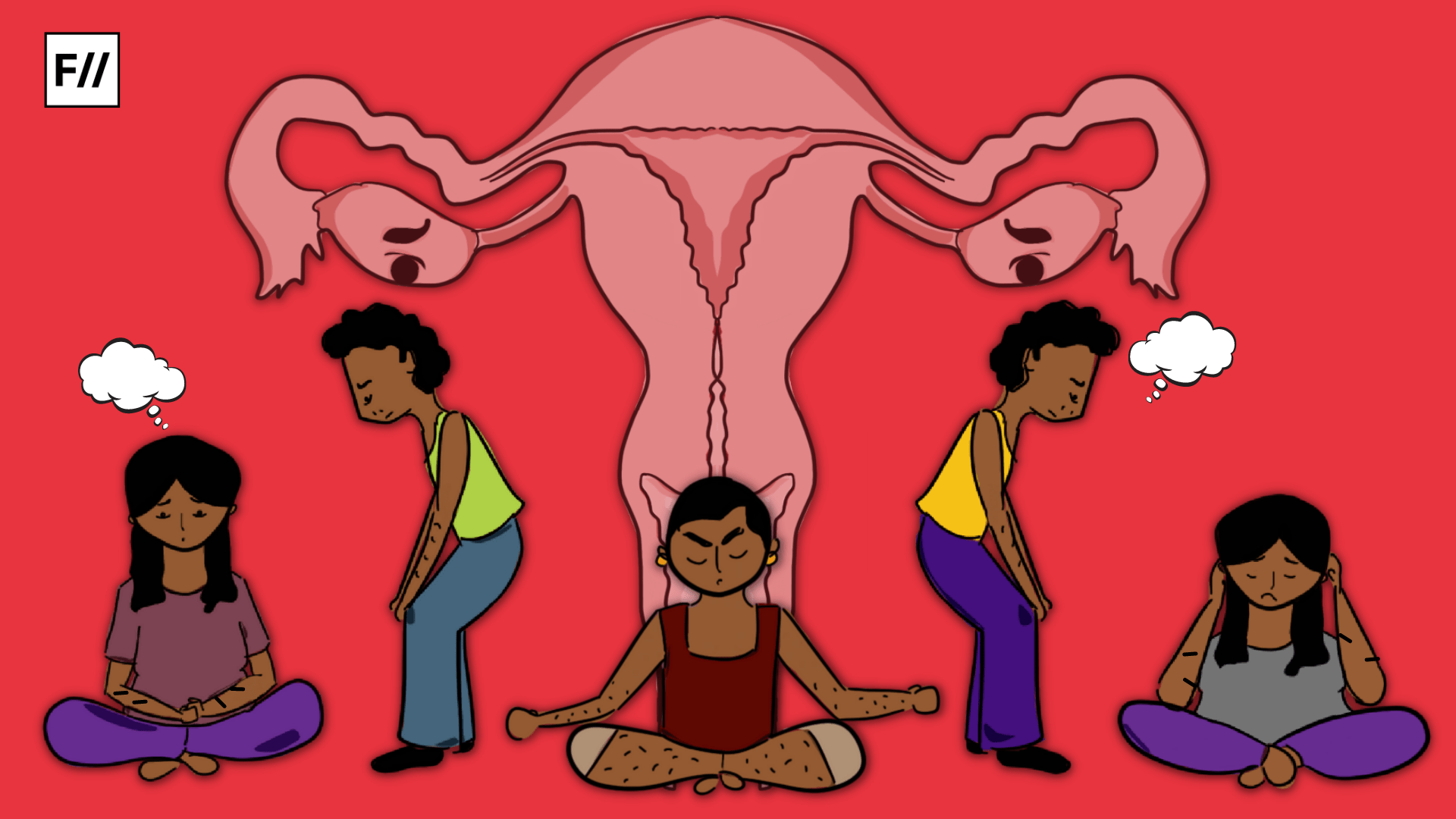Amenorrhea is a medical condition that refers to the absence of menstruation in a person, despite having gone through puberty, not being pregnant, and not having hit menopause. While missing one or more periods at a stretch can be defined as amenorrhea, one is advised to consult a doctor if it lasts for more than three months.
Amenorrhea can be divided into two distinct categories: Primary and Secondary Amenorrhea. While the former is when one has not had their first period by the age of 15 or even after a few years of first signs of puberty, the latter points to the sudden absence of menstruation for at least three months or more, after always having regular periods.
When a menstruator has a history of irregular menstrual cycles and then stops getting their periods for six months, it may also be referred to as Secondary Amenorrhea.

Symptoms, risk factors, and causes
Other than the most significant symptom of the absence of periods, menstruators with amenorrhoea may experience headaches, vaginal dryness, hormonal acne, pelvic pain, hair loss, facial hair growth, hot flashes, and white nipple discharge, among numerous other symptoms.
Amenorrhea can happen for several reasons, and the most common causes include (but not limited to) lifestyle, family health history, and certain chromosomal conditions. Menstruators belonging to families that have a medical history of having early menopause, chronic illnesses or amenorrhoea have often been observed to be more at risk.
The stigma around menstruation and the absence of menstruation is not uncommon in India. Research shows that there are a lot of social and psychological implications of the stigma attached to primary amenorrhea. However, it is crucial to seek professional medical advice as early as possible to diagnose the underlying conditions, if any, and begin treatment
While the most common causes of primary amenorrhea are structural issues with the reproductive system, genetic abnormalities with the ovaries, and problems rooting from the pituitary gland and hypothalamus, secondary amenorrhea can often be traced back to chemotherapy and radiation therapy for cancer, pregnancy, breastfeeding, certain birth control methods, stress, weight fluctuations, and insufficient or unhealthy diet.
Ovarian tumours, primary ovarian insufficiency, hormonal conditions like hypothyroidism and polycystic ovary syndrome, and pituitary and hypothalamus disorders have also been studied to be among the other reasons for causing amenorrhea.
Although amenorrhea is not considered a life-threatening condition, it may usually be a symptom of a treatable underlying health problem. Therefore, if the underlying issue resolves, the possibility of having regular menstruation increases as well.
Also read: Premenstrual Syndrome: PMS Is Not About ‘Bad Moods’ That Can Be Dismissed Easily

Stigma and insensitivity towards amenorrhea
Swati Joshi, a scholar from Jamia Millia Islamia says, “After my gynaecologist informed that my high testosterone level was the reason I had not had a period in 5 months, my best friend smirked and said, ‘I am waiting to see a beard now’“.
If the societal stigma was not enough, the insensitivity of people towards women having amenorrhea can be comprehended through comments or punchlines like the one mentioned above. Joshi also suggests that ‘jokes‘ like this display a lack of awareness and empathy, which further causes deterioration in one’s mental health over time due to missed periods.
Another student, Mansi, from Indira Gandhi Institute of Research and Development revealed, “For a very long time when I was just [living] with my family where my mother was the only woman in the reproductive age, and whose ‘days’ I would barely know about, it felt completely normal to have what you would call “irregular” or “abnormal” cycles or not menstruating for months. It had been like that ever since I started having periods. It hit me hard for the first time when I left home for higher education, where I was surrounded by my female friends, all in the same age group that this may be a problem. It was here that I became acutely aware of the ‘irregularity’, which constantly made me feel imperfect and inherently lacking in something. The constant feeling that something needs to be ‘fixed’ has never left. Much more than the physical aspect of amenorrhea and its treatment, the fact that people don’t even discuss it is what makes me uneasy“.
Also read: Endometriosis: An Under-diagnosed, Painful Condition With Lasting Impacts
The stigma around menstruation and the absence of menstruation is not uncommon in India. Research shows that there are a lot of social and psychological implications of the stigma attached to primary amenorrhea. However, it is crucial to seek professional medical advice as early as possible to diagnose the underlying conditions, if any, and begin treatment.
A study also suggests that a “multidisciplinary approach” including psychological, gynaecological, and genetic consultations may prove helpful in the diagnosis and prognosis of amenorrhea.
Featured Image: Ritika Banerjee for Feminism In India
About the author(s)
Poulomi is a Master's scholar from Jamia Millia Islamia, New Delhi, who loves to scribble poetry and write essays just when she can't seem to hold it all in. Her research interests include feminist studies, postcolonial theory, trauma and disability studies. She is very eager to read anything she can get her hands on, when she is not obsessing over spicy food or sleeping





